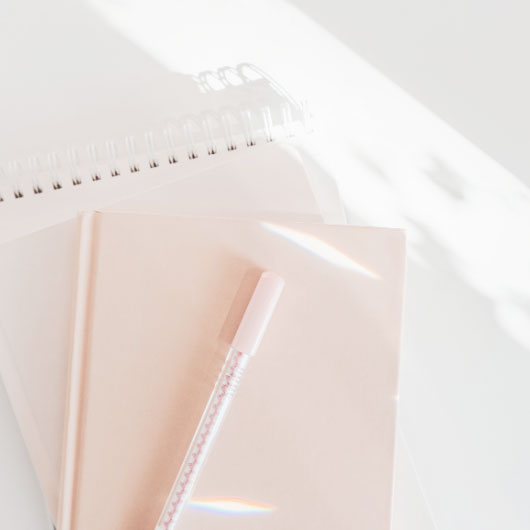In the modern injectables era, “profile balancing” has become the standard of care—we value symmetry over size, prioritize the sum over the parts. Rather than correcting a single area in isolation, the savvy injector aims to shore up our facial framework before finessing more central features, to achieve a congruous composition. “We’re using extreme precision to harmonize the face,” explains Dr. Amelia Hausauer, a board-certified dermatologist in Campbell, California—“micro-tweaking and making tiny adjustments, top to bottom, to try to get everything to work synchronously and with structural beauty.”
The process is somewhat analogous to tuning the individual strings of a guitar to ultimately elicit a symphonic chord upon strumming—or, in this case, upon glancing in the mirror. Interested in chin filler? Please contact Dr. Rodgers for a consultation.

Since many of us have spent our lives gazing at our reflections straight on, the appearance of our profile is a relatively new concern—one born of selfies and raised by Zoom. (Hey, we’re as tired of writing about Zoom as you are of reading about it, but facts are facts.) According to New York City board-certified facial plastic surgeon Dr. Dara Liotta, “Watching ourselves in animation while we talk and, worse still, looking at ourselves in bad lighting and at an unflattering angle, with our laptop camera placed on a desk, below our natural eye level,” has shifted our focus to features we perhaps rarely considered before—the chin being a biggie.
How the chin affects your other facial features
Corroborating this fact is our own (heavily doctor-populated) Instagram, which has become a veritable gallery for chin filler before-and-afters. And it’s about time, our experts say. “The chin has long been an underappreciated facial feature,” in Dr. Liotta’s opinion. “A strong chin helps balance our profile and makes our neck look longer and our submental [under-the-chin] angle look deeper,” she explains. “A chin that is appropriately projected also keeps us young-looking—delaying certain signs of aging, like jowling—by physically tenting the skin forward” to a greater degree than a petite or retracted chin.
While some chins are diminutive by nature, others shrink with age. “As we lose bone, fat pads, and muscle mass in our face, and our skin becomes looser, our chins recess backward and in, changing our face shape and making it more bottom-heavy,” thereby contributing to jowl formation, says Dr. Jennifer MacGregor, a board-certified dermatologist in New York City. The presence or absence of a chin can dramatically influence the look of other attributes as well, like our nose and lips or our smile lines and submental fullness.
Since this isn’t always immediately apparent to patients, the chin isn’t an area everyone is eager to invest in. (And augmenting the chin is indeed an investment—creating a discernible change here can take multiple syringes of filler, at upwards of a thousand dollars a pop.) “People may initially resist filling the chin, because they can’t connect how it will affect other areas that bother them more,” says Dr. MacGregor. Board-certified Boston dermatologist Dr. Papri Sarkar says the same: the chin can be a hard sell for those who aren’t so tuned in to their profile—“to them, it’s like wasted product,” she notes.
But in most cases, it takes little more than a conversation over profile photos—and a try-and-see approach—to get folks to understand how “some of the other things they’re highlighting, like jowls or laxity under their chin, will be addressed by this procedure [in ways] they didn’t necessarily think of,” says Dr. Hausauer. It’s a common scenario—one that, incidentally, underscores the importance of finding an injector who appreciates anatomy and the nuanced interplay between the various parts of the face.
Case in point: “A lot of times, people come in and say, ‘I really hate my nose.’ And I’ll explain that it’s not necessarily your nose but the balance between your nose and the lower part of your face, which doesn’t have quite as much structure,” Dr. Hausauer adds. If the relationship between the two is off, filler can help recalibrate it—making the chin more dominant so that the nose appears slightly less so.
By bolstering the chin, you also lend support to the lips and mouth region. “There’s an interaction between the bones, muscles, and tissues in this area,” Dr. Sarkar says. “And if your chin is more elongated, it’s going to make your lips more pronounced, more symmetric,” she says. Dr. MacGregor agrees that the chin holds enormous sway over the lips—and says she spends her days trying to convey the importance of this dynamic to patients. “A lot of times, younger patients come in wanting only their lips done—they don’t want me to fill the sides of the chin or under the mental crease [the groove that separates the lower lip from the chin],” she says. “But I can’t bring the lips out and make them look natural if those other areas are set back in the face. I can’t get good lower lip turnout and make the lips wider and juicier unless I treat [those surrounding structures].”
Likewise, she notes, “in a face with a deficient chin, it’s difficult to firm the lower face without first restoring the chin contour.” But by extending the chin forward with filler and essentially lengthening the lower jawline, “we can take up some of the slack in the jowl area,” she says. That tightening effect extends to the under-chin region as well. Whether you’re creating forward projection or downward length, Dr. Hausauser adds, filler in the chin will exert a slight tug on the submental tissues, to give a crisper angle.
Subtly elongating the chin also gives the face what’s generally thought of as a more youthful and classically feminine heart shape. In men, the chin is traditionally wider and boxier. While today’s injectors acknowledge standard gender norms, they certainly aren’t ruled by them, says Dr. MacGregor: “I don’t believe in putting people in a box.”
Bottom line: the chin serves to anchor the lower face. In profile, Dr. Hausauer tells us, it should fall in line with the glabella (between your eyebrows) and the philtrum (the column between your nose and upper lip). “The chin being at the proper level is so important—you can’t balance all the features unless the chin is balanced,” reiterates Dr. Sarkar. “And it really makes people look so much older when it’s pushed back.”
How doctors customize chin augmentation
Chin filler isn’t just for those over 40 with vanishing volume and bone resorption though. Our experts describe it as a fairly universal fix—popular across generations and racial/ethnic groups. Dr. Liotta makes the important point, however, that no treatment is one-size-fits-all and warns that “trying to conform people of different ethnicities and aesthetic goals to one set of measurements is what results in the anonymous Instagram face.”
What matters more than textbook proportions is that your doctor augments your chin gradually, gracefully, and in accordance with your individual features. An artful approach goes beyond placing a blob of gel behind the mentalis muscle in the center of the chin. “You almost never fill just that part of the chin,” notes Dr. Sarkar. Injectors pay careful attention to neighboring areas as well, blending filler outward into the prejowl space—to the left and right of the chin—for a smooth, uninterrupted sweep of the jawline, and contouring up and around the mental crease and corners of the mouth, to support the marionette area and prop up the lower lip.
The best injectables for chin augmentation
When adding length, width, or projection to the chin itself, injectors often reach for a sturdy, stay-put hyaluronic acid (HA) gel, injecting it deep on the bone. Juvéderm Voluma, which won FDA approval for this purpose last year, is a go-to for the chin, as is off-label Restylane Lyft. Collagen-stimulating Radiesse, or calcium hydroxylapatite, is another popular choice for patients who don’t mind its irreversibility. (Unlike HA, it can’t be easily dissolved if there’s a problem.) Because Radiesse is so robust, even a relatively small amount can deliver a chiseled effect. “I love Radiesse behind the mentalis in the chin,” Dr. MacGregor says. “I think it gives the most excellent and precise shape—and it’s also a little bit more economical [than certain HAs].” Equally critical to an excellent and affordable outcome is injection technique: “You can get a lot more [payoff] with less [product] by respecting the anatomy, movement, musculature, and expressions of each patient,” points out Dr. Sarkar.
For chin-adjacent areas that see a lot of movement, softer, more flexible HAs, like Restylane Defyne—which earned FDA approval for chin augmentation and correction earlier this month—tend to look most natural when we’re talking and smiling.
To finesse results further, doctors routinely pair chin filler with neurotoxin. “When I’m treating the chin nonsurgically, I often combine filler and Botox,” says Dr. Liotta. “If the chin is weak and pulled back in profile, using Botox to relax the mentalis—the muscle that pulls the skin of the chin backward and dimples the chin—brings the chin forward slightly, out of the shadow of the lower lip, and smooths it out.” Sedating that muscle—easing the tension it holds and its resulting cobblestone texture—also “keeps the [accompanying] filler in a really pretty shape and can elevate [the area] even further,” adds Dr. Hausauer. In appropriate patients, Dr. Hausauer also injects neuromodulator into the platysma muscle of the neck—its central bands, in particular—to relieve any pull on the chin and jawline, for a more youthful overall outcome.Interested in chin filler? Please contact Dr. Rodgers for a consultation.
Plan on multiple visits—or consider a chin implant
Since addressing the chin can demand a fair amount of filler, doctors will often build it out in stages, over several visits—especially if patients are hesitant to treat the area. “Very frequently, I don’t put in enough to fully correct or realign the chin but instead add a little at a time,” creating incremental changes, says Dr. MacGregor. This baby-steps approach not only allays anxiety and allows for a more gradual coaxing-out of the chin but gives the filler time to settle so that on subsequent visits, injectors can reassess and deliver the most precise improvement.
Of course, filler-driven transformations are only temporary—and keeping your chin up requires yearly injections. For those who are open to surgery, a chin implant may offer a more sustainable solution—but as with any procedure, it’s not without its downsides. Talk to a board-certified derm or plastic surgeon about all the options for getting a chin that punctuates your unique profile, onscreen and off.



